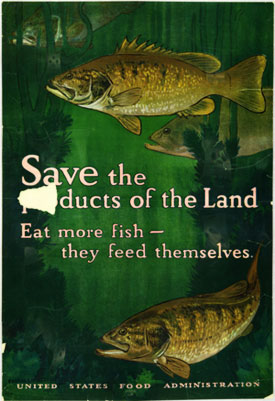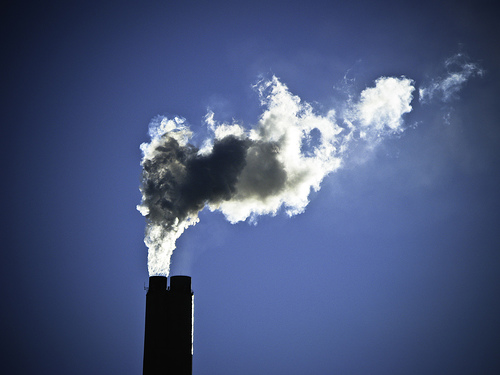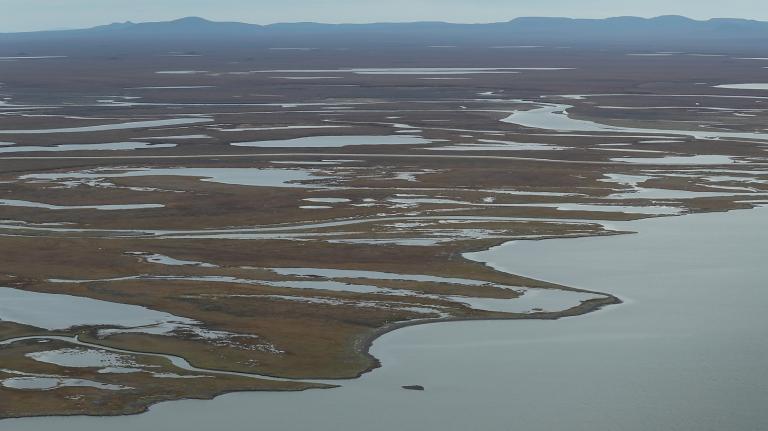Have you ever considered the energy efficiency of a fish? Or how much pristine rainforest would be slashed and burned if you (and everyone else) never ate another fish again?
 Ray Hilborn, scientist, former farmer, and aspiring foodie?Photo: Ray HilbornThese juxtapositions might seem random and hypothetical, but questions like these led to a distinct paradigm shift for me and, I imagine, many others listening to fisheries researcher Ray Hilborn recently at the University of Washington’s fourth lecture on food and the environment.
Ray Hilborn, scientist, former farmer, and aspiring foodie?Photo: Ray HilbornThese juxtapositions might seem random and hypothetical, but questions like these led to a distinct paradigm shift for me and, I imagine, many others listening to fisheries researcher Ray Hilborn recently at the University of Washington’s fourth lecture on food and the environment.
“I never thought I’d be working on food,” he said. Now, like a lot of people, Hilborn has set off on a journey that, like Michael Pollan’s in The Omnivore’s Dilemma, began with the questions, Where does our food come from? What are the environmental costs of producing it?
There really are plenty of fish under da sea
Hilborn sometimes sounds like a fish out of water talking about larger food issues. That’s because as a professor of aquatic and fishery sciences at the University of Washington, he’s traditionally focused more on managing fisheries from an ecology perspective than from the stomach’s perspective. With a job like his, you might think that he’d be sweating the much-publicized study projecting the global collapse of most fisheries by 2048. You would be wrong.
While conservation groups and mainstream media wail about these dire straits, Hilborn has been scratching his head and taking a critical look at the data used to make these predictions. After calling the study “mind bogglingly stupid,” he reached out to Boris Worm, its head author and thankfully “someone you can talk to,” to discuss the projection’s main shortcomings. Namely, why it doesn’t make sense to base projections of how many fish there will be in the future solely on trends of how many fish are being caught. Hilborn insisted on looking at data for the actual numbers of fish in the sea, not just the number being caught. There are plenty of reasons for fish catch to drop, including market demand and narrowing classifications of fish groups (i.e. getting more specific than “sharks”).
As a result, Hilborn and Worm brought together a diverse group of scientists, fisheries experts, and conservationists to reexamine the sustainability of commercial fishing (in the developed world) and published a much more optimistic report on the future of fish in Science in July 2009: “Rebuilding Global Fisheries.” This time around, they found a “general pattern of stability” in commercial fish populations since 1980, with the large caveat that extreme problem areas do exist.
“There’s plenty of tuna in the ocean,” Hilborn said. “[The extremely endangered] Bluefin tuna is the exception, not the rule.”
Floundering food standards
Why is all of this fishy data so important? Because, Hilborn stressed, the world’s growing population — and its growing appetite for meat — is going to have increasing impacts on the environment. This is where the energy efficiency of a fish comes into play,* or how much edible protein you get for the amount of energy (typically fossil fuels) invested in production. The efficiency of 29 North Atlantic fisheries (9.5 percent) is much higher than any type of landlubbing livestock (pork comes in at 5.6 percent; chicken, 2.9 percent; and beef, 1.9 percent). When it comes to greenhouse gas emissions from production, fisheries are on par with most other livestock except gassy beef. Hilborn used the Atlantic herring fishery to calculate this, which uses mechanized purse-seine methods to pull fish onto boats, the primary source of its greenhouse gas emissions.
However, some people, such as oceanographer Sylvia Earle, advocate for giving the beleaguered oceans a break and leaving fish alone entirely. But, Hilborn wants to know, what would the environmental impact be if the world took this advice? He’s still working on calculating this, but his preliminary conclusions state that rainforests don’t fair well.
One-quarter to one-third of the world currently gets its protein primarily from fish. About half of increased food production comes from chopping down undisturbed forests. “If we stopped fishing,” Hilborn said, “we would need to convert a lot of rainforest” to agricultural production to cover the 82 million tons of fish landed in 2006 alone.
Now Hilborn isn’t advocating buying into the “Big Lie” that “if you manage fisheries well, there is no impact.” Fishing will lower the number of fish. Ecosystems will be changed. Some species will be depleted.
Nevertheless, Hilborn calls foul on the “very different standards that we apply” to food produced on land versus caught in the sea. He argues that terrestrial farming lowers biodiversity in a way that can’t compare with marine systems. That means fishing reduces the number of species present in a given area (its biodiversity) by around 30 percent. How much does land-based agriculture lower biodiversity? Very few studies exist to offer comparison, though bird diversity does go down as agricultural intensity rises. Imagine, however, a thriving, “biodiverse” organic vegetable field, and then imagine the lush West-Coast temperate rainforest that the organic farm eventually replaced. That complete of a transformation typically doesn’t occur when an area of the sea is fished. The ecological integrity of the ocean remains after the fishin’ boats putter away.
Even so, the Marine Steward Council, a nonprofit that provides certification for sustainably caught seafood (which was born out of a partnership between the World Wildlife Fund and Unilever), is trying to assign standards that ignore these differences in terrestrial and marine food production. In its “Principle 2” [PDF], it requires that:
Fishing operations should allow for the maintenance of the structure, productivity, function and diversity of the ecosystem (including habitat and associated dependent and ecologically related species) on which the fishery depends.
That sounds like a noble goal. But as Hilborn asks, “What form of agriculture adheres to this?”
 Special Collections, National Agricultural LibraryA compelling question. However, we should be careful not to gloss over the potential negative impacts of one form of food production because of the sins of another. We should also be careful to examine and weigh the comparative impacts of all food forms with actual data, which Hilborn realizes he is far from having settled. He likewise acknowledg
Special Collections, National Agricultural LibraryA compelling question. However, we should be careful not to gloss over the potential negative impacts of one form of food production because of the sins of another. We should also be careful to examine and weigh the comparative impacts of all food forms with actual data, which Hilborn realizes he is far from having settled. He likewise acknowledg
ed that his calculations only include animal protein and not the impacts of a vegetarian diet against seafood. Still, he ended his presentation with the recommendation to eat more fish than other meats and flashed this World War II-era piece of propaganda, at right.
Now, I’ve never been much of a fish fan, even in my pre-vegetarian days, but I have to admit that more than a few of my perceptions about eating seafood and land-based agriculture have fallen into the deep blue “let’s see.” How do Hilborn’s assertions catch you, readers?
——-
Correction: This story originally described the energy efficiency of fish and livestock as “how much energy is transferred from the food it eats into its tissue (meat aka stored energy),” which is its ecological efficiency. The energy efficiency numbers used by Hilborn here are interpreted as edible protein energy return on investment (EROI), which is “calculated by dividing the amount of useful energy provided by a given activity by the culturally mediated energy dissipated in providing it. In the case of food production systems, a common energy output used to calculate the EROI is the edible protein energy yield from the system being evaluated.” (Peter Tyedmers, “Fisheries and Energy Use,” Encyclopedia of Energy, Volume 2, 2004)



